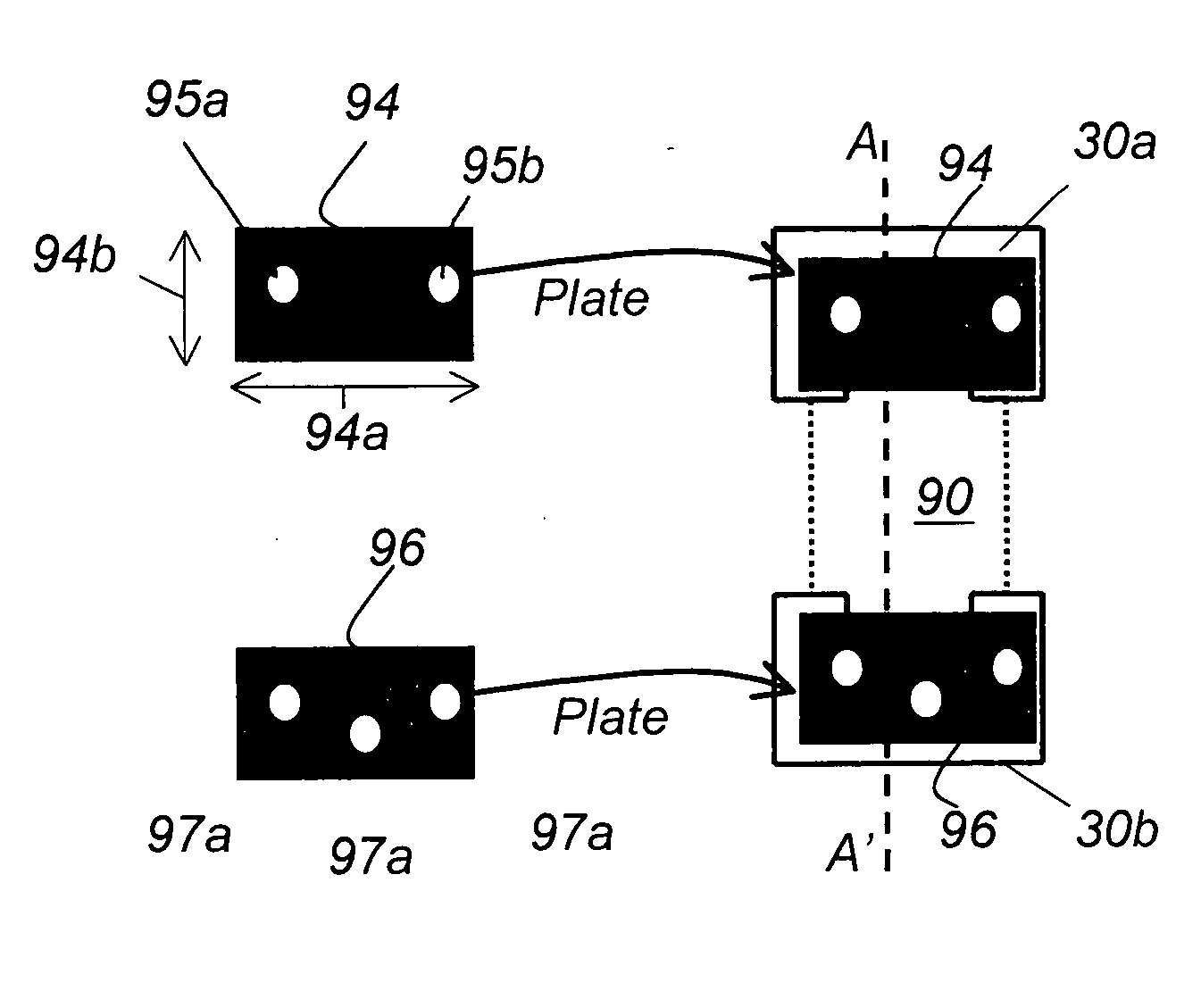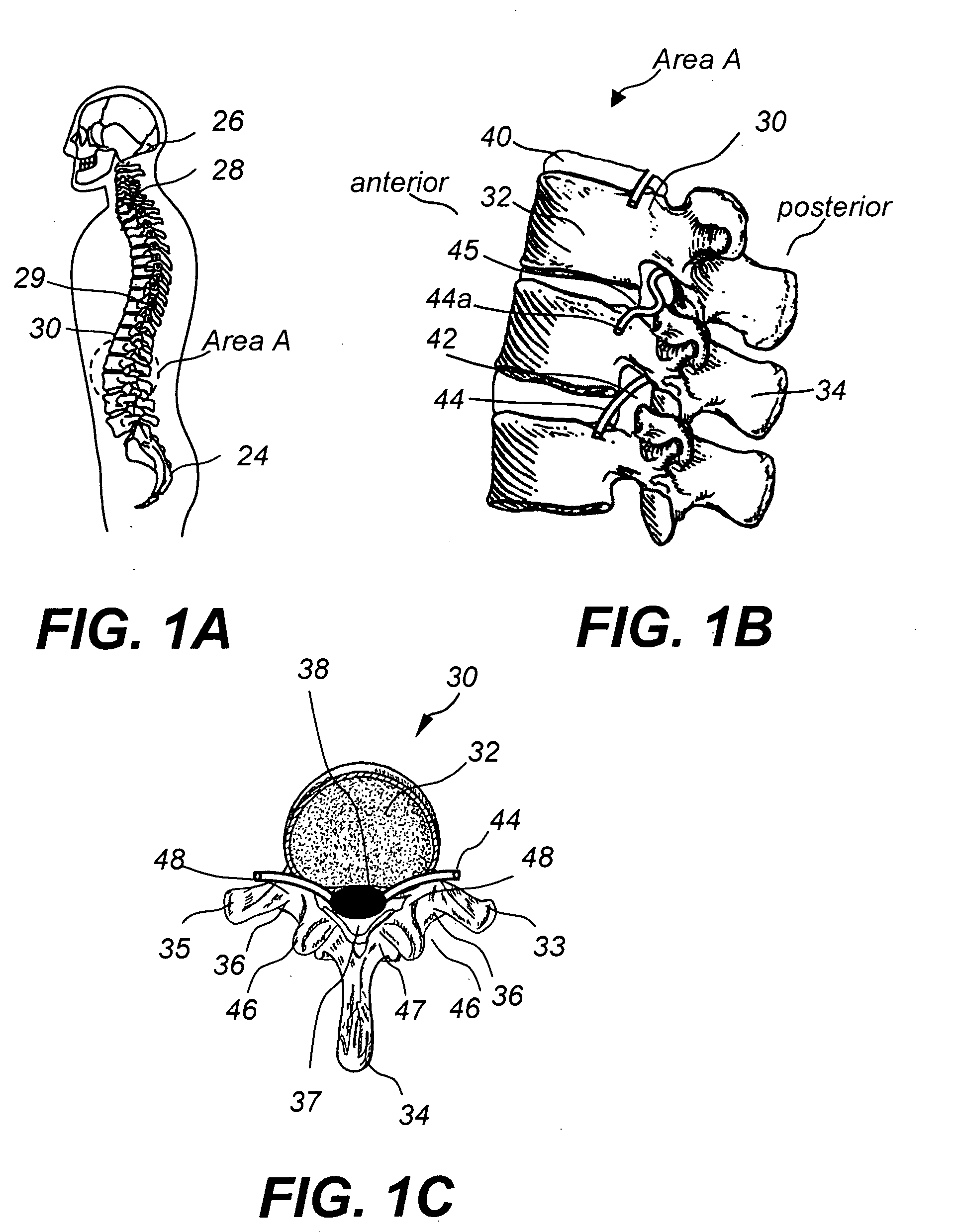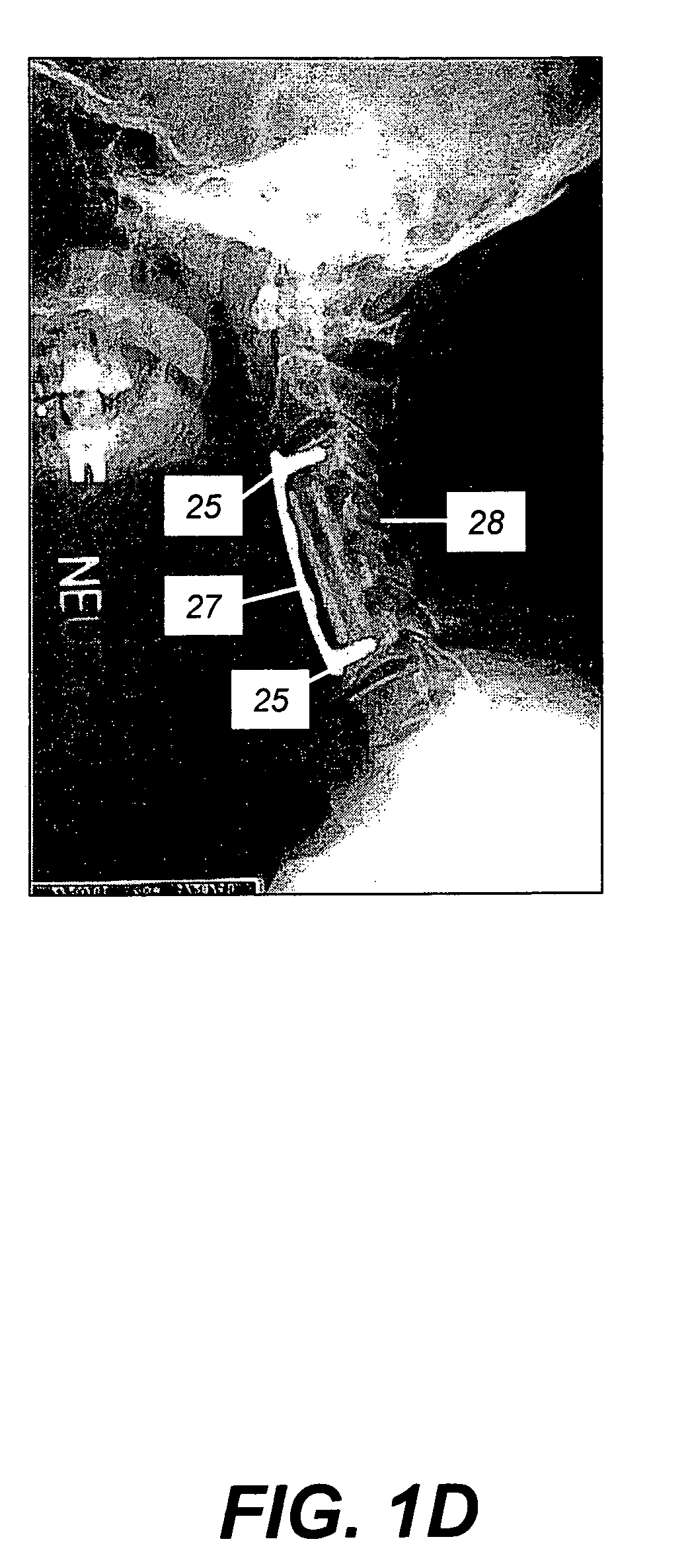Method and device for kinematic retaining cervical plating
- Summary
- Abstract
- Description
- Claims
- Application Information
AI Technical Summary
Benefits of technology
Problems solved by technology
Method used
Image
Examples
Embodiment Construction
[0033] Referring to FIG. 2, a new grafting technique for replacing an intervertebral disc 40 includes first removing the intervertebral disc 40 form the space between two adjacent vertebras 30a, 30b, then forming grooves 32a, 32b in vertebras 30a, 30b, respectively, then preparing a graft 90 and inserting the graft in the space between the vertebras 30a, 30b. The graft 90 is either an autograft or an allograft and includes tongue extensions 92a, 92b extending from the top 91a and bottom 91b of the graft 90, respectively. The tongue extensions 92a, 92b are designed to fit closely in grooves 32a, 32b, respectively, in a tongue and groove or “dovetail” attachment configuration. The tongue and groove attachment configuration provides multidirectional stability and allows immediate range of motion of the spine without the need for external bracing. In one example, shown in FIG. 4, the groove 32a, has dimensions 33a, 33b, 33c of 3 mm, 10 mm, 5 mm, respectively. The dimension 33b is usuall...
PUM
| Property | Measurement | Unit |
|---|---|---|
| Structure | aaaaa | aaaaa |
| Elasticity | aaaaa | aaaaa |
| Biodegradability | aaaaa | aaaaa |
Abstract
Description
Claims
Application Information
 Login to View More
Login to View More - R&D
- Intellectual Property
- Life Sciences
- Materials
- Tech Scout
- Unparalleled Data Quality
- Higher Quality Content
- 60% Fewer Hallucinations
Browse by: Latest US Patents, China's latest patents, Technical Efficacy Thesaurus, Application Domain, Technology Topic, Popular Technical Reports.
© 2025 PatSnap. All rights reserved.Legal|Privacy policy|Modern Slavery Act Transparency Statement|Sitemap|About US| Contact US: help@patsnap.com



